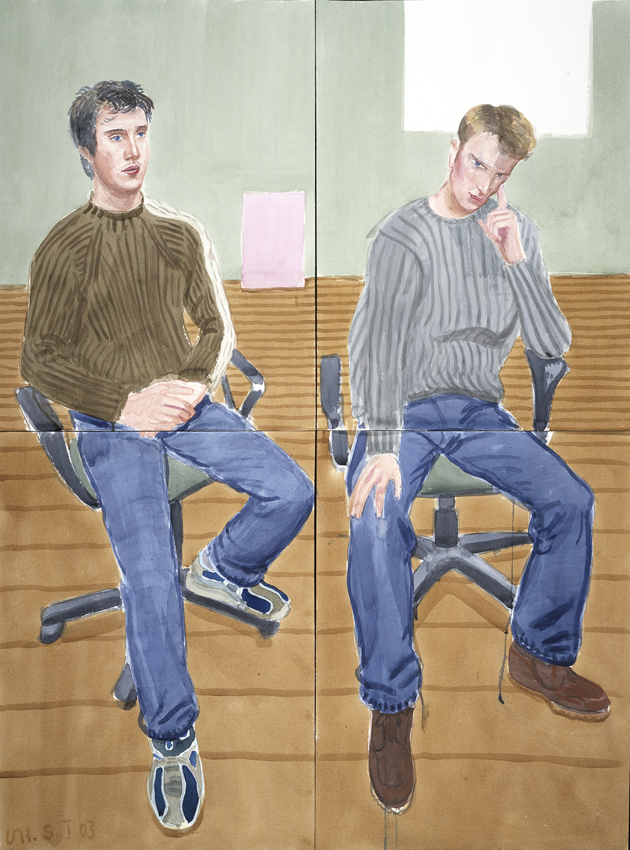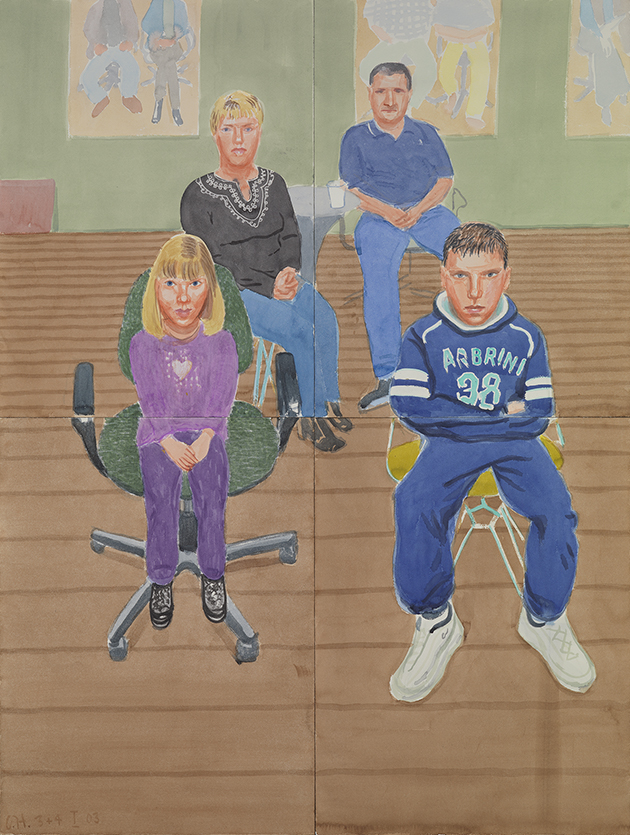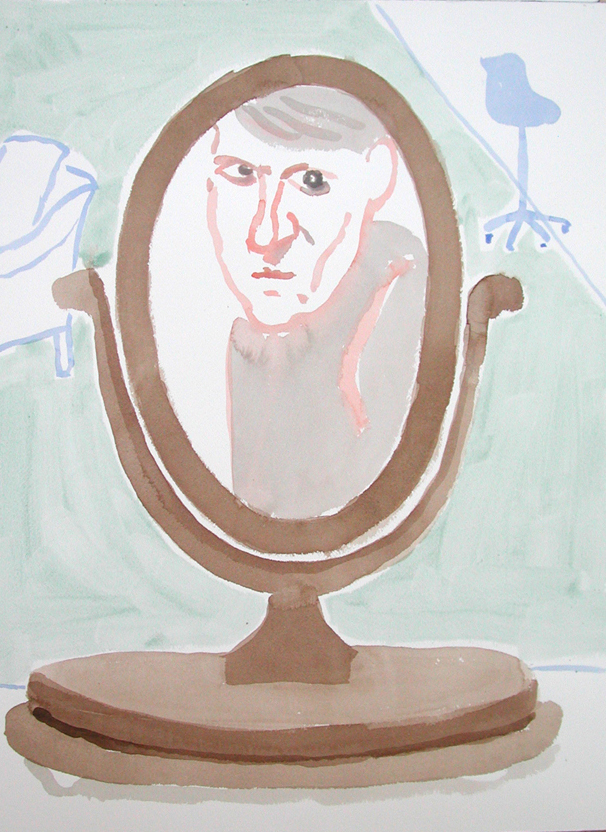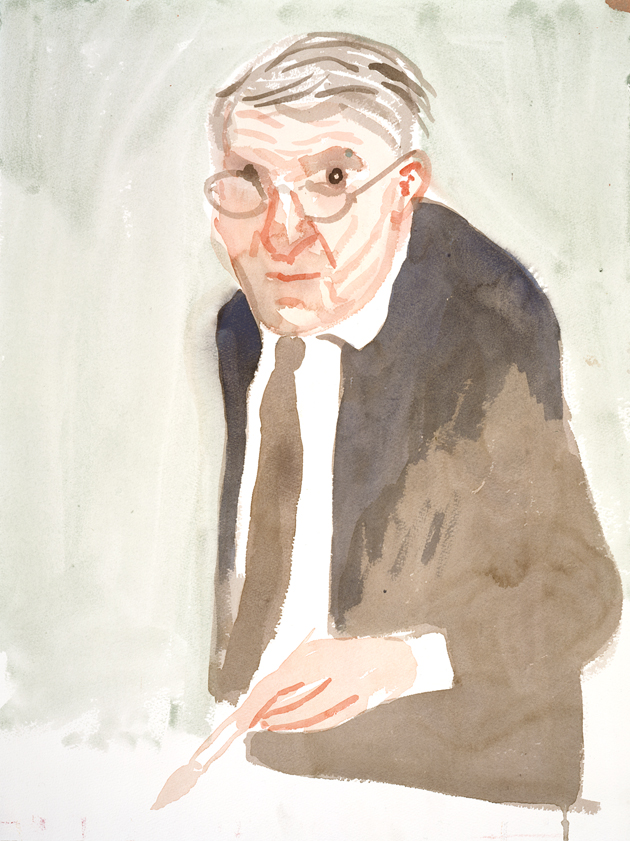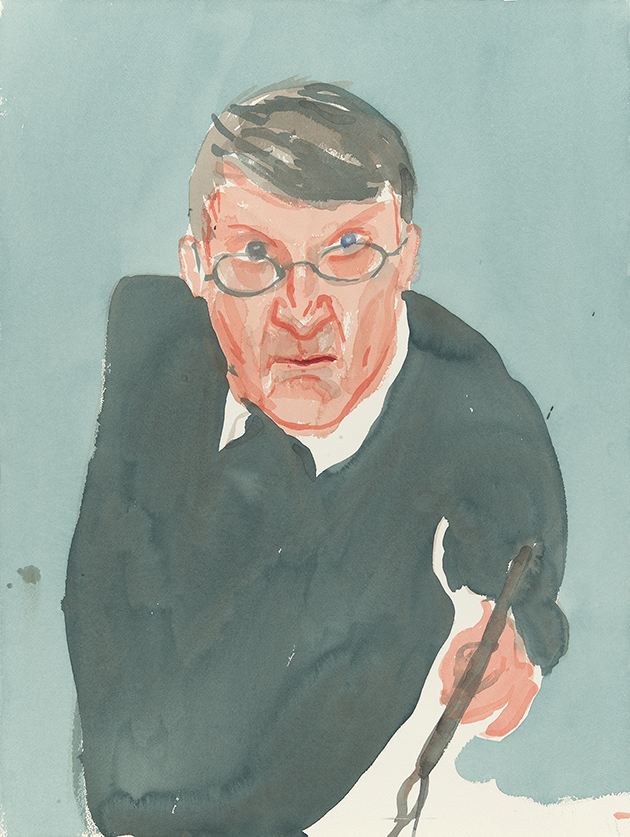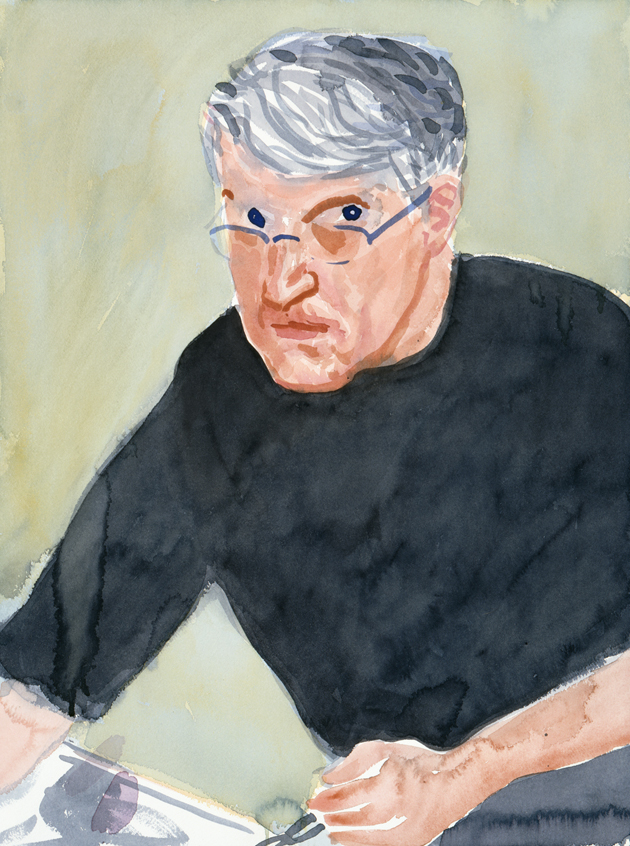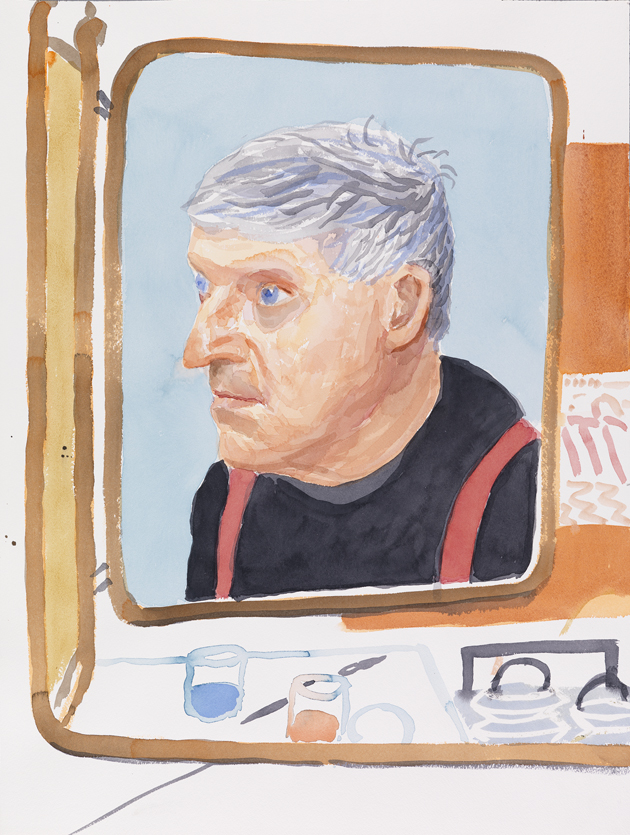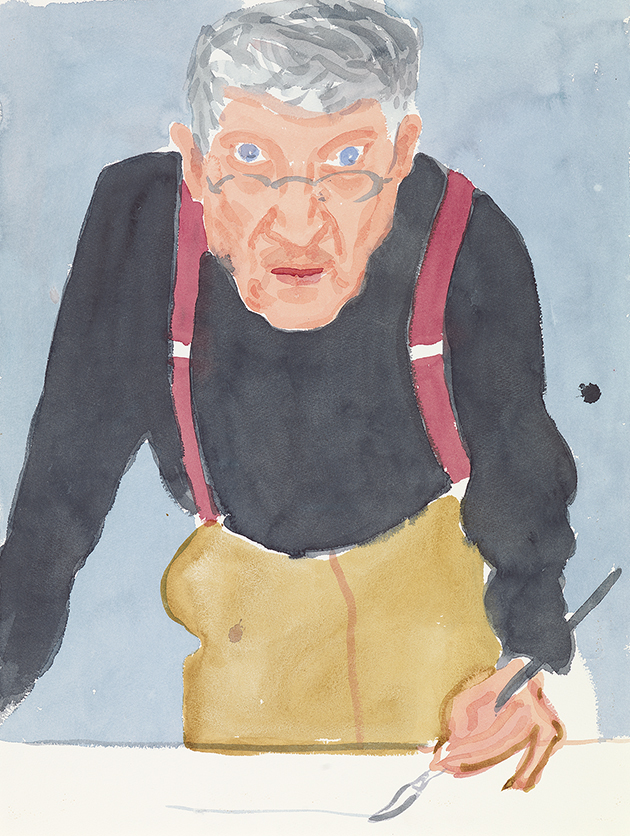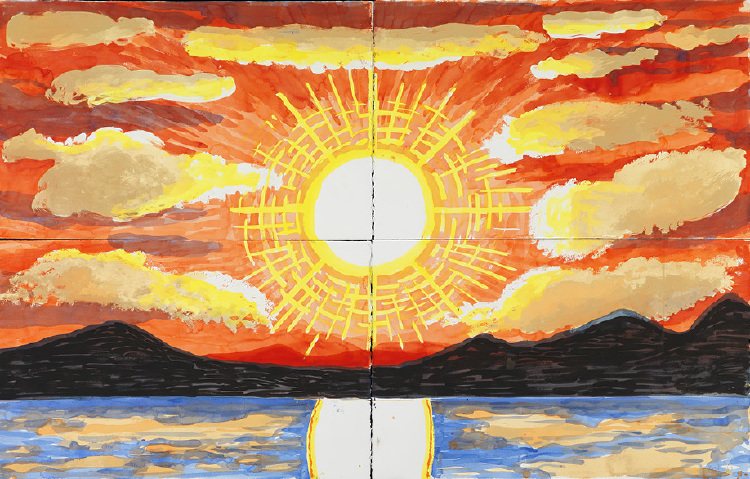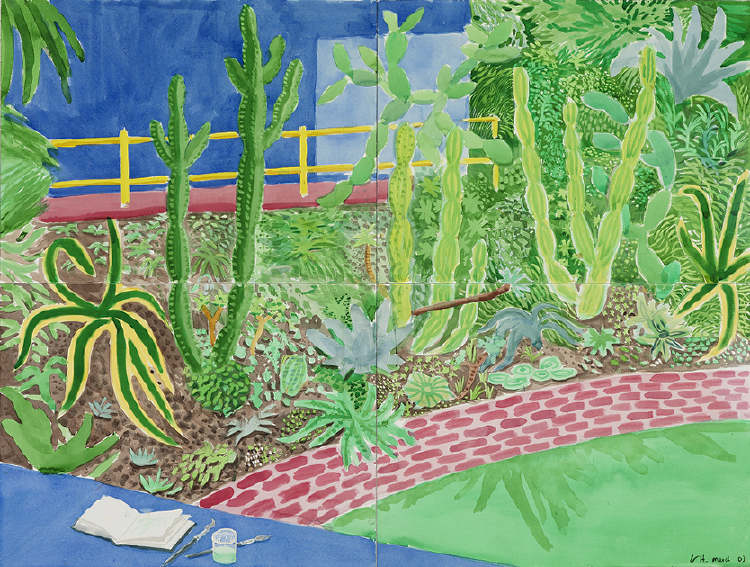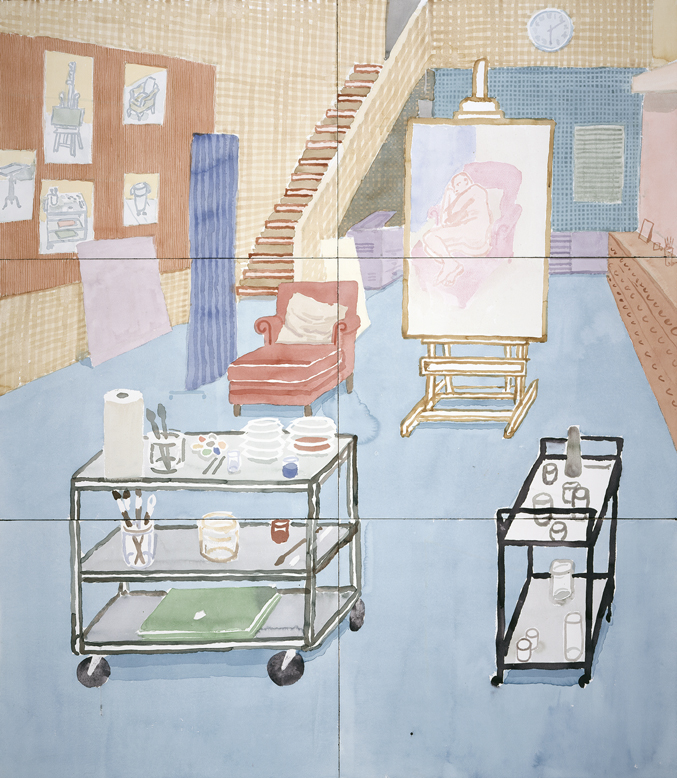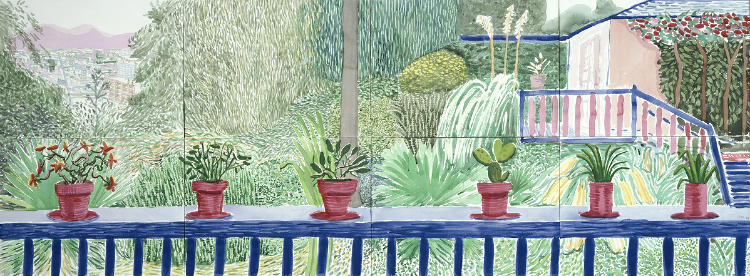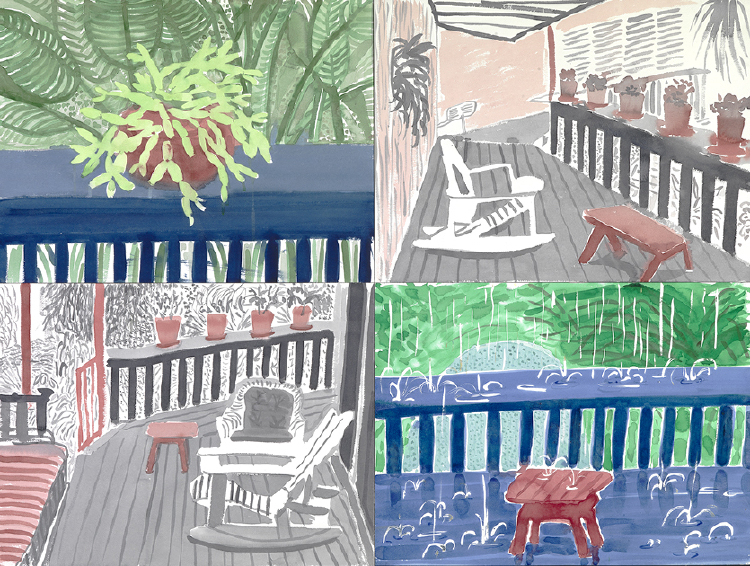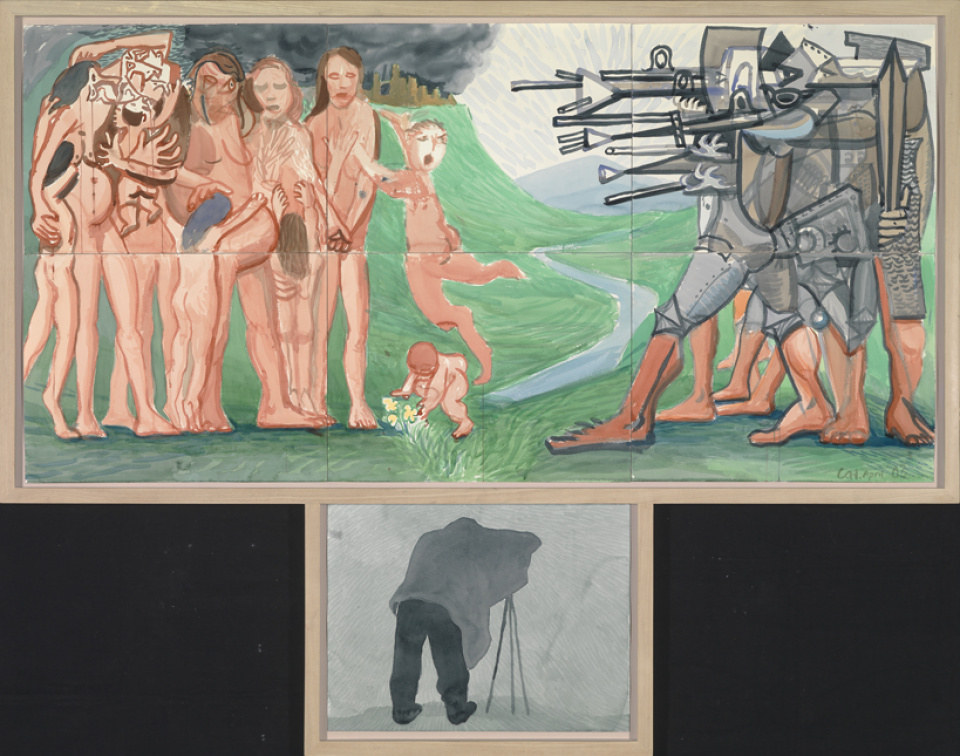
Watercolor shows in London
The extent of Hockney’s investment in a fresh medium within his long-established practice is revealed in two exhibitions in London, Five Double Portraits at the National Portrait Gallery and Painting on Paper at Annely Juda Fine Art. Together they attest to the broad subject matter and scale of Hockney’s work in watercolor, from portraiture to still-life. Of Hockney’s landscapes in particular, Adrian Searle writes in the Guardian: “Here is full, saturated colour, a greater freedom and playfulness .... These paintings are not afraid of their own joyful decorativeness .... Hockney is great at rocks and black glaciers, Iceland with its examples of weather, the Naples yellow horizon light at Nordkapp, and the white sun indistinguishable from the moon. Under the northern light, Hockney almost finds himself visionary.”
The Massacre and the Problems of Depiction
Hockney is daily occupied with more investigations into watercolor, working in his Los Angeles garden and studio as of early in the year, while his theoretical contributions to art history continue to stir debate at conferences such as “Optics, Optical Instruments and Painting: The Hockney–Falco Thesis Revisisted,” which he attends in Ghent. He resumes his address of the camera’s role in painting, this time its role as a witness in the massive, seven-sheet watercolor The Massacre and the Problems of Depiction. In Hockney’s take on Picasso’s epic work Massacre in Korea (1951), a hooded photographer is added, shooting the titular scene with a large-format camera.
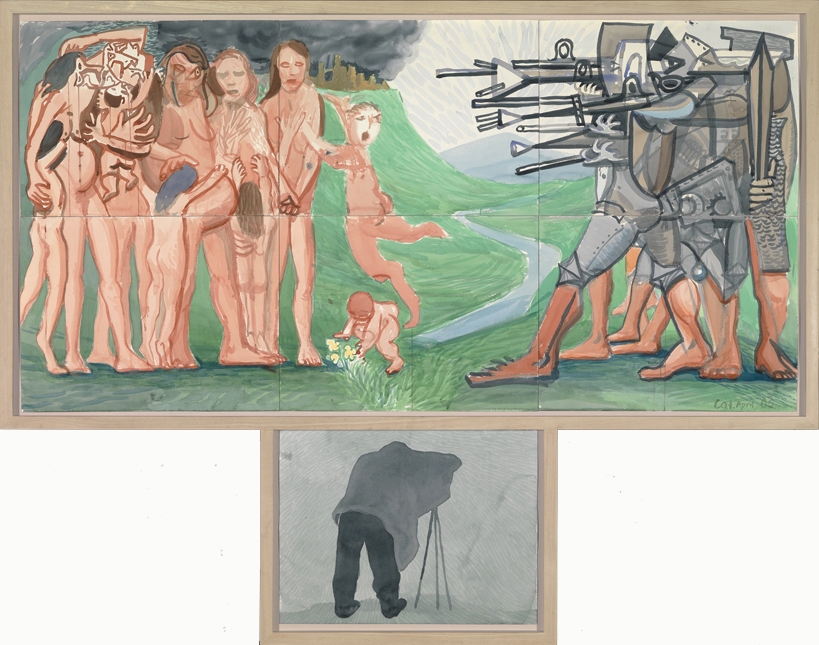
[Picasso’s Massacre in Korea] was generally dismissed as propaganda and compared very unfavorably with Guernica [1937], and was rarely discussed again. Years later, on seeing it in the Picasso show at MoMA [in New York], I was struck by it. It stayed with me, and I began to see another interpretation. In 1950, images from the Second World War were still vivid and shocking; recovery from the war was just under way, when news of a new conflict far away from Paris arrived .... My point is that his image is a universal one, yet Picasso realized that the photographs were after the event, indeed in a way not telling us the terrible brutal activity of the camps but of the survivors—the few against the terrible number of deaths. So his painting is perhaps a painter’s response to the limitations of photography, limitations that are still with us, and need some debate today.
Norway, London, and Los Angeles
Hockney makes a second trip to Norway, where he continues to capture its natural beauty in watercolor. Back in London and then L.A., he continues [NESTED] painting double-portraits, his dogs, various interiors, and his L.A. garden.
Exhibitions
Solo
- Five Double Portraits, National Portrait Gallery, London, UK (Jan 16–Jun 29).
- Painting on Paper, Annely Juda Fine Art, London, UK (Jan 17–Mar 1); catalogue.
- Gravures et lithographies, Galerie Lelong, Paris, France (Nov 5–Dec 23).
Group
- Editions Alecto: A Fury for Prints. Artist’s Prints and Multiples 1960–1981, Whitworth Art Gallery, Manchester, UK (May 14–Aug 14), travels to Bankside Gallery, London (Sep) and City Arts Centre, Edinburgh (Oct).
- Forty Years, Richard Gray Gallery, Chicago, IL, USA (Sep 5–Oct 3), travels from Richard Gray Gallery, New York (May 3–May 31).
Publications
Publications
- David Hockney: Painting on Paper, Annely Juda Fine Art, London.
- Hockney’s Portraits and People, by Marco Livingstone, London: Thames & Hudson.
- David Hockney Portretten, by Marco Livingstone and Kay Heymer, Antwerp, Belgium: Ludion.
- Hockney’s People, by Marco Livingstone and Kay Heymer, New York: Bullfinch.
Film
Film
- David Hockney: Double Portrait, 49 min., directed by Christopher Swayne and Bruno Wollheim.
Honors
Honors
- Honorary degree, Academy of Fine Arts, Florence.
- Lorenzo de’Medici Lifetime Career Award, Florence Biennale.
